When we talk about a fundamental education in art, we’re talking about the basic foundational skills you need to learn to create professional-level art.
Is it slow and painful to learn these fundamentals? That’s up to to how they are taught, if they are taught at all.
Unfortunately, we’ve seen both beginners and experienced artists struggle to progress because they haven’t been taught the fundamentals. At Evolve Artist, we believe these fundamentals should be taught and the process shouldn’t be slow or painful.
We’re taking you through why a fundamental education in art is essential for any artist, where you can find it, and where you won’t.First things first: What are the fundamentals of art?
We define them as value, color, edge, and perception.
Values are about understanding how dark or light something is.
Understanding color is about mastering the intensity of the color, it’s warmth or coolness.
Once these two elements are managed on a palette, we move to a canvas to fill a shape and address the outer edges of it. Are they sharp edges or are they gradients?
You then develop the skill of perception, which through proportional drawing, brings values, color, and edges together to create realistic art.
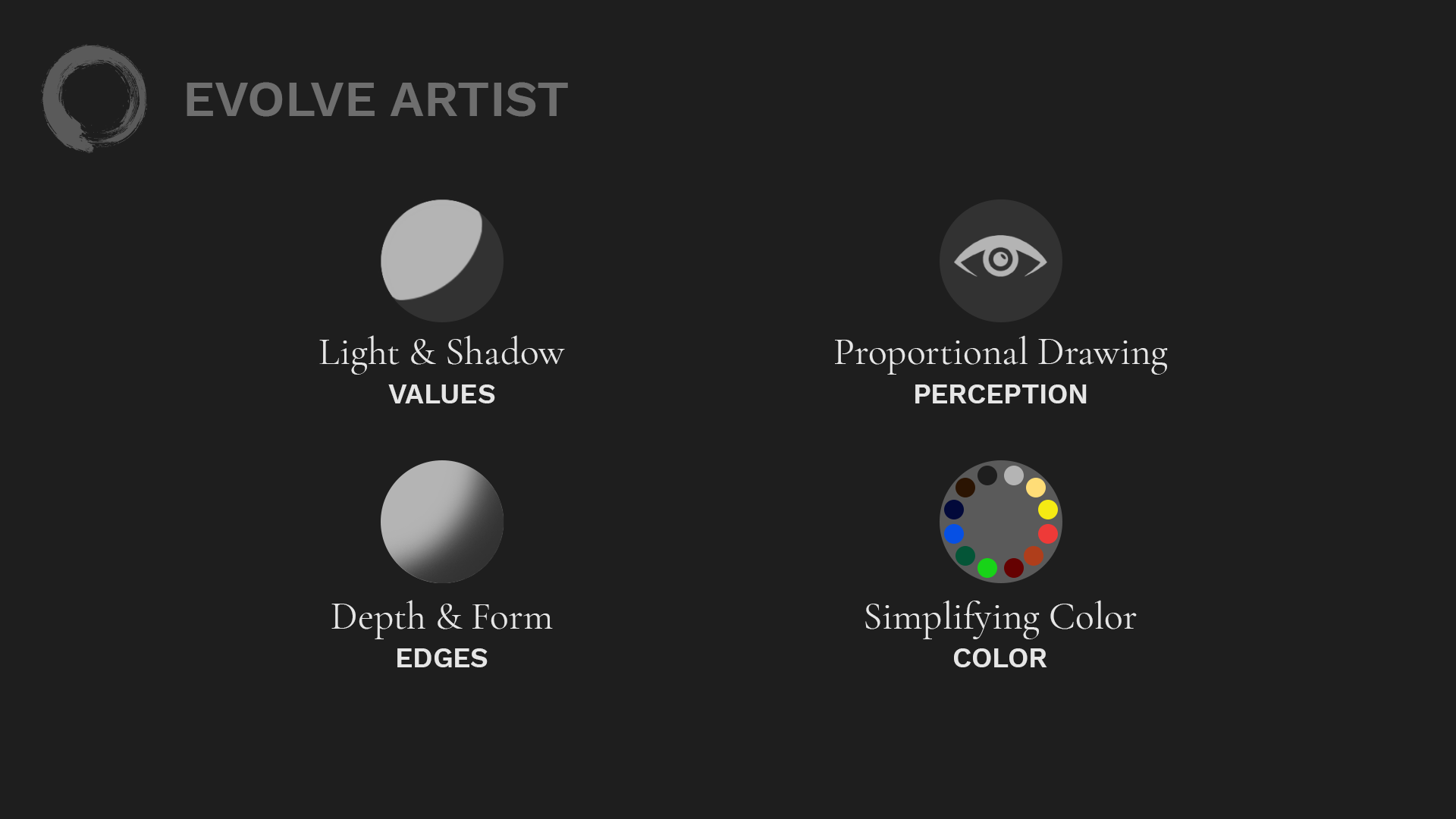
If you want to receive a fundamental education in art, you must be taught the fundamentals of art - values, edges, color, and perception. While this seems obvious, the fundamentals are not always taught.
Will you find a fundamental education in art at art college, an atelier, or on YouTube?
Unfortunately, no. The fundamentals are not always taught. If they are taught, they are not taught in an accessible way.
Despite the cost and time commitment that comes with art college, these institutions often don’t come close to scratching the surface of the four very basic principles of value, color, edge, and perception.
There are a few ateliers that have been popping up recently around the world that are providing this fundamental education in art. But the path they provide to mastery is so long and tedious.
On top of that, these schools and ateliers skim only the finest. These are extremely driven artists from the top of the pool who want to do what the old Masters did and study in a place that is steeped in those traditions. Those who thrive in art school and atelier environments are highly focused. Anyone that's not that person couldn't deal with the tedious nature of arts education offered at art colleges and ateliers.
If you’re jumping onto YouTube or buying videos from pros who pitch watching them paint as a way of teaching how to paint (rather than teaching fundamentals), the vast majority of what you see is theater. It comes decorated as education, but it's theater.
You can watch Kevin Murphy (Evolve founder and master painter) mix colors and notice he used that ‘red’ and ‘green’ and ‘blue’ to make ‘that color’ and made a mark that looked right. What you're not seeing is 30 years of experience at a professional level that informed how much of each color he used, and how he made the mark appear on the canvas as he intended.

Watching a master painter, like Kevin Murphy, work can give you ideas, but it can’t replace a fundamental education in art.
While Kevin still makes room for experimentation in his art, most of the time, there's a paycheck attached on the other end. What he does looks simple, but these skills have been developed with great care. It can’t be emulated through watching alone. It can give you some ideas, but if you try to replicate what Kevin does at home without the underpinnings that make it possible (i.e. mastery of the fundamentals and years of experience), it won't be so easy.
Why are the fundamentals not being taught?
There are two main reasons the fundamentals aren’t taught in colleges and ateliers.
Most of the teachers in these schools don't even know the fundamentals exist. You have a lot of teachers who have never actually been trained in the technical skills themselves because they went to school when realism was being brushed aside. There wasn't a real teacher in any of the schools they went to.
CLICK HERE to learn why starting with realism is essential.
They also assume you already know the fundamentals before going to college. The problem is high school art teachers aren't teaching fundamentals either. Whether it’s through experience or through drawing in high school, there’s an assumption that students have already received a basic education in art through osmosis.
Rather than focusing on the fundamentals, art colleges and ateliers focus instead on intent and expression. But how do you teach to “paint what you think” without any fundamentals first? “Paint blue, paint what you feel”. There is no language for it.
Students may be able to get some level of result in an abstract form, but it’s difficult to find teachers who can break down the fundamentals in most colleges. While there are some incredible people that teach, it’s not the standard.
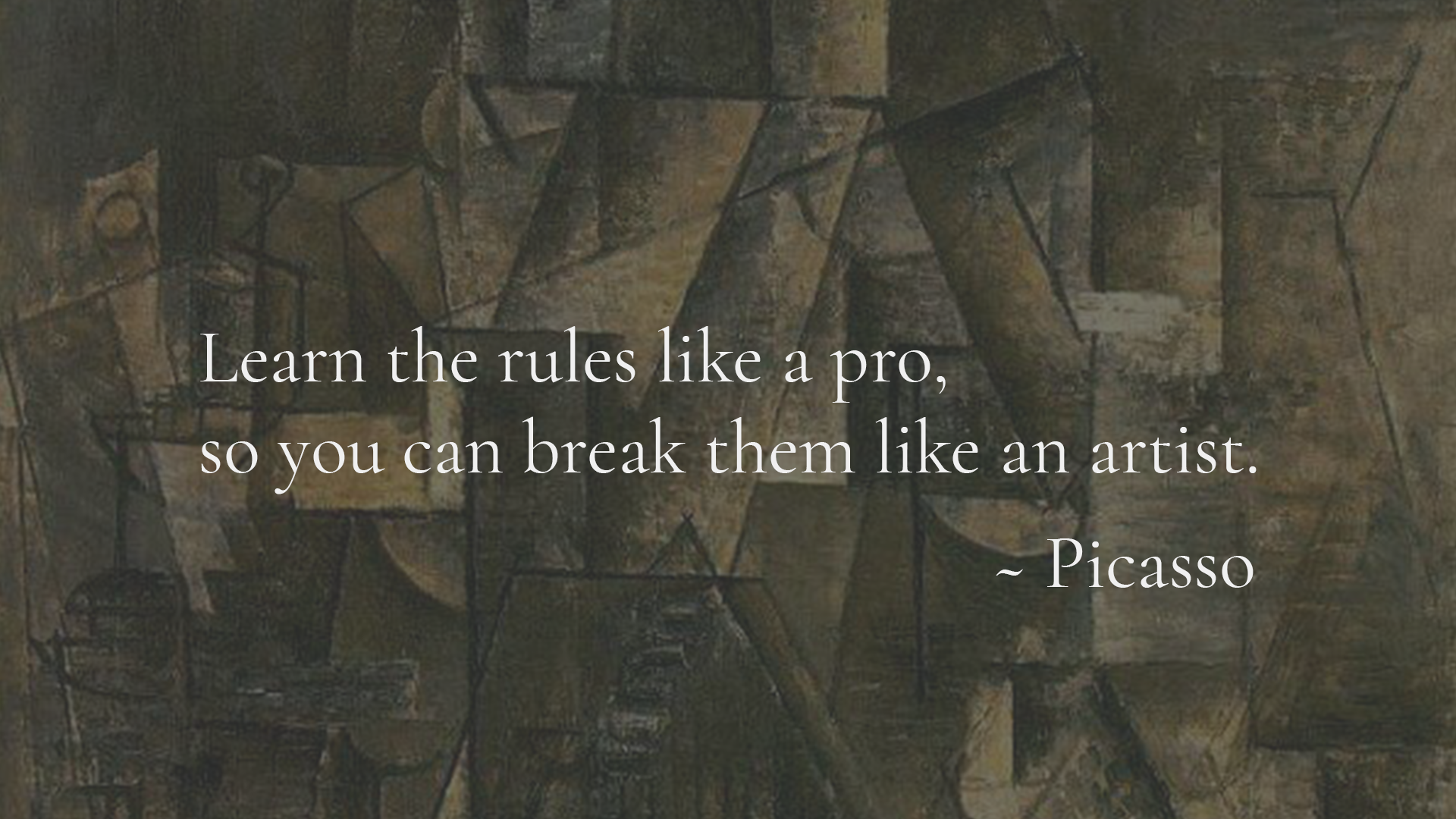
Abstract artists like Picasso understood the vital importance of mastering the fundamentals as a necessary foundation for all styles of art.
You can’t skip a fundamental education in art
But what if you’re an artist that wants to focus on expressionism, impressionism, or abstract art? Do you need to spend time on values, color, edges, and perception?
Absolutely yes.
The idea that if you study traditional art, you become a traditionalist, is nonsense. If you study in a school that provides a fundamental education in art, those fundamentals should not interfere with how you want to express yourself once you've learned them. You should be able to take those fundamentals and do anything you want with them in your art form of choice.
If you can't - you weren't taught the fundamentals. If you can - you're off and running. You're not going to be held back by a lack of understanding.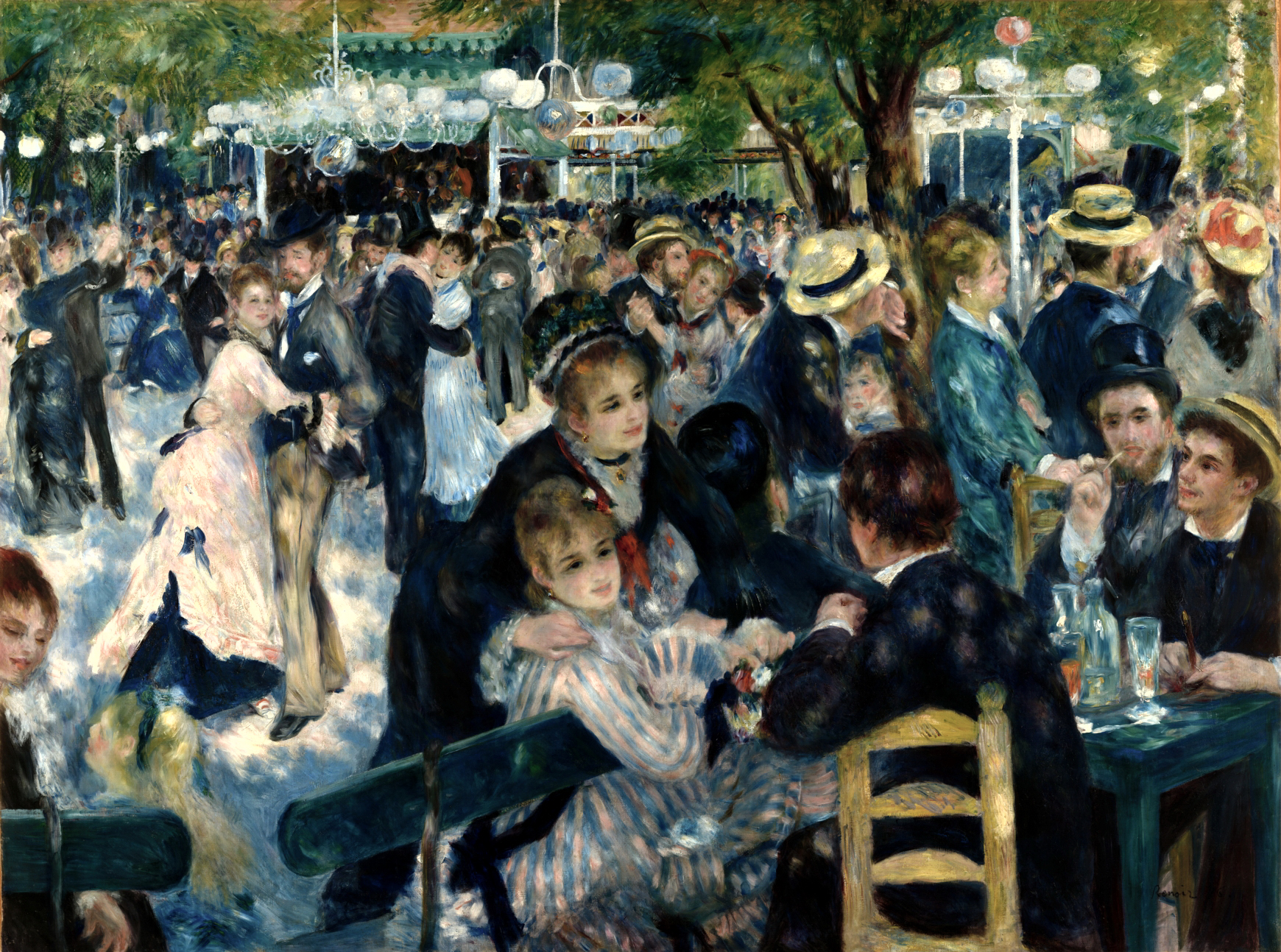
Impressionist painters such as Renoir mastered the fundamentals of color, edge, and values to use light and shadow with incredible impact. (Bal du moulin de la Galette, 1876)
The problem is, without the fundamentals, students are trying to build on top of quicksand. They don't have the basic arts education to hold up the structure they’re trying to build, which is why students can hit these glass ceilings.
They find that they are going back and shoring up the foundations which were never put in place. Without the essential components of value, color, edges, and perception, everything built sinks back down to level one, over and over again - you can’t progress.
We hear from so many artists who are struggling. The worst part is that they're committing the time and energy. It’s heartbreaking.
You clock the hours, burn the candle at both ends, open every book, watch every video you can, and you think you've got all the information, but nothing seems to click. And it comes down to missing these ridiculously simple four moving parts.
Bad art teachers can set you back
I took a class that was for impressionism and got so lost that after the first semester I dropped out.
It was all in the way the teacher approached things and the lack of explanation. I became so confused I stopped painting. I'm now afraid to put paint on canvas. I want to just forget what I was taught.
Comment from an Evolve live Q&A
This experience quoted above is not atypical. If you get the wrong teacher to start, despite all your work and commitment, they can set you on a path to failure. It’s not intentional. Not everybody is cut out to teach the fundamentals, and not everybody, even if they're cut out to teach it, has the skills if they were not taught it themselves. It's not an easy thing.
When somebody sets out to teach, it's not enough to know what you're doing. You must be open-minded enough to not lock your students into a style. It has to strip away the teacher's opinion and boil it down to the nuts and bolts facts.
Good art teachers focus on the fundamentals, not their opinions
Liking something or not liking something is not a teacher's job. That's a buyer's job.
Kevin Murphy
Evolve Founder and Master Painter
In education, opinions from your teacher shouldn’t matter. For a lot of teachers, their opinions are a big part of their critique, and their experience is the vast majority of what they teach. But you can't teach experience. You can only teach skills. The experience must be earned by each artist by standing in front of an easel.
Values are like math. They're either right or they're wrong. A teacher saying “Oh, I like this” doesn't help. It's nice that you like it, but is it right? Are the values correct? Are the colors correct? Are the edges where they belong? That's education. To be able to say, “I’ll show you how you figure that out. That color is too cool, or it's too chromatic.”
Imagine your math teacher coming over and your answer to a calculation is wrong but they say they like the way you did it. It's still wrong.
Once your technique is sound, you can pursue artistic expression with your own voice. It doesn’t matter if your teacher likes it or not. What matters is if there are enough people that like it that are willing to buy it.
Can you get a fundamental education in art online?
Evolve mimics Kevin’s full-time in-person educational program. It's not diminished by being online. Kevin and the Evolve team work very hard to make sure that you're getting the same education that you would at Kevin’s school. The difference between being in a school and being on your own at home is you have to get up and do the work every day. In person, your teacher can stand over you with a whip if you're not doing what you're supposed to do.
There's a reason that professional teams have coaches, and it's because it's hard to be a self-starter every day. But if you want this badly enough and have the discipline, you will be a self-starter. And you'll be able to go from doing stick figures up to doing top-tier professional-level work in a very small number of committed hours.

Evolve students achieve incredible results through online learning. Assignments are checked twice a day, with personalized feedback from real instructors.
Does online training lack personal interaction?
With the Evolve Program, you have so much interaction with instructors and other artists. We intentionally built the program to have a community that feels like a school so you don’t have to feel like you're alone at home working.
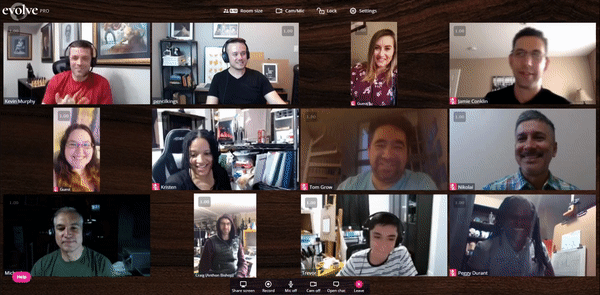
The Evolve community is a genuine online community where students can work in the comfort of their homes while never being alone.
There are chat rooms, and both Kevin and Piper (Evolve’s Head Instructor) have office hours. If you need to speak with someone, somebody is always available. You're never without the support you need.
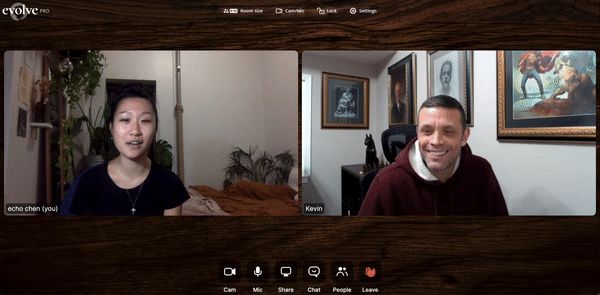
Kevin Murphy, Evolve Founder and Master Painter, is available to Evolve students during office hours to offer feedback and guidance.
How long does it take to reach pro art skills?
The Evolve Foundations Program is only 350 hours of time on average from start to finish. When you break that down, it's seven hours a week for under a year. That's not a lot of time to go from knowing nothing to being able to produce professional-level paintings.
If you were going to college, you'd be committing six hours to a painting class and then probably another six hours of homework every week for one class. That's 12 hours. If you're putting 12 hours a week into our program, you'll be producing professional-level paintings in six months.
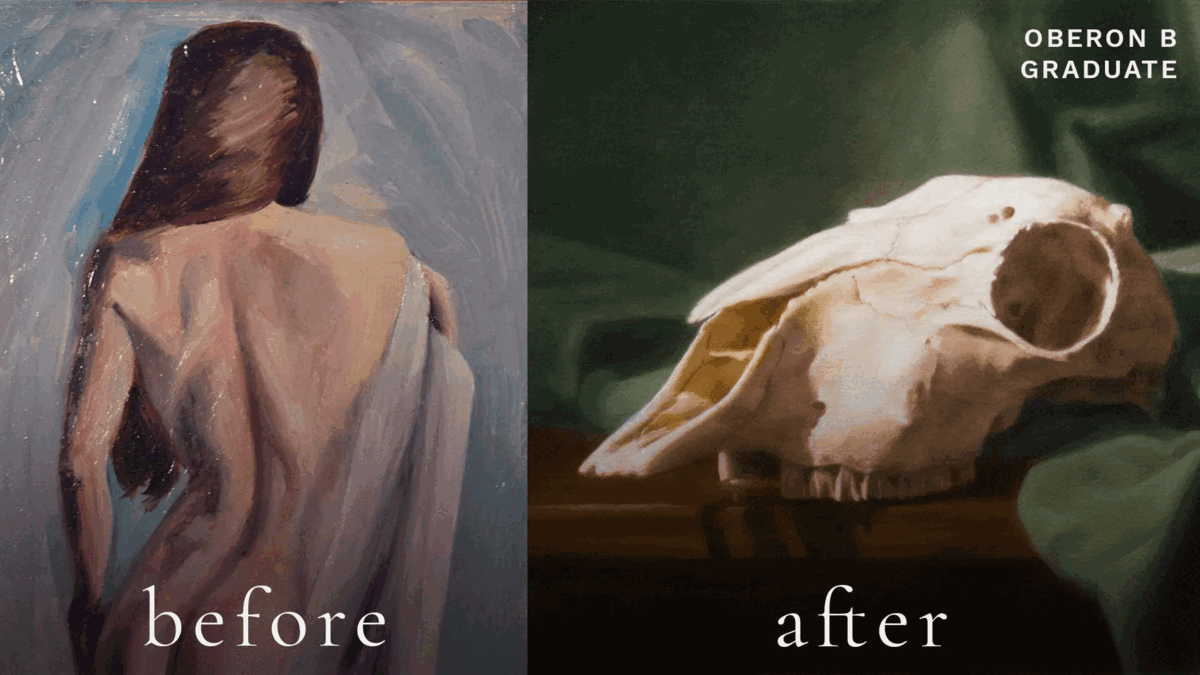
Evolve students can work at their own pace and achieve amazing results, as seen above.
Paying off your education with your art
There are also benefits to the time savings you can achieve through Evolve. No college is giving you professional-level results in a painting class in one year. If you're looking at six months at 12 hours a week, you could probably start making money on your work well before you even hit that six-month mark. It's a nice place to be. Imagine a college telling you that you could earn back your tuition on the education they're giving you while you're still getting the education. Most artists can't pay back their college tuition even after they get out of college.
With Evolve, if you do what we show you and take great care, you could make back what you pay for the program while doing the program.

Through the Evolve program, Joseph A honed his skills in the fundamentals and is now delivering commissions.
Bringing it all together
There are so many artists struggling because they’ve never been taught the basic fundamentals of art at art college, in ateliers, or even in high school.
We’ve seen firsthand how understanding values, edges, colors, and perception can transform an artist’s work. We don’t believe the process to learn these fundamentals should be tedious, long, or reserved for the top of the talent pool. That’s why we developed the Evolve Program - so anyone who has the will and the commitment can learn the fundamentals of art and create pro-level work.
If you’d like to learn more about each fundamental of art, CLICK HERE.
Want a taste of how the fundamentals can take your skills to the next level? CLICK HERE for the FREE mini-course How to Create Depth and Volume in Your Art.
If you’re ready to start your journey towards making pro-level art, join Evolve Artist HERE.
Happy Painting!
